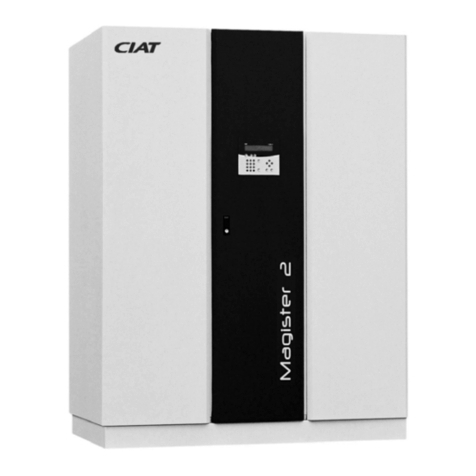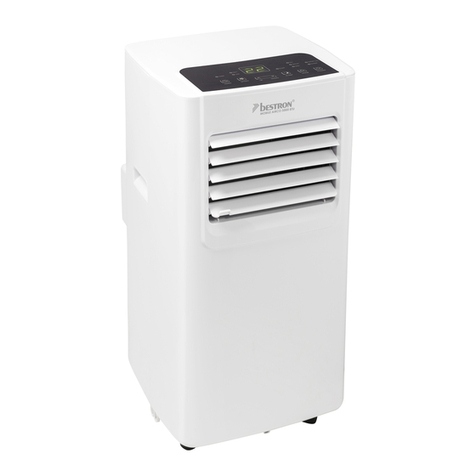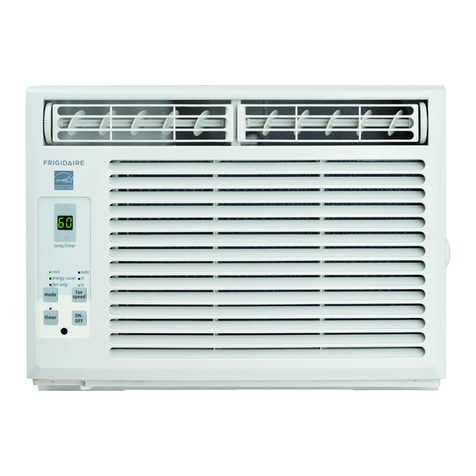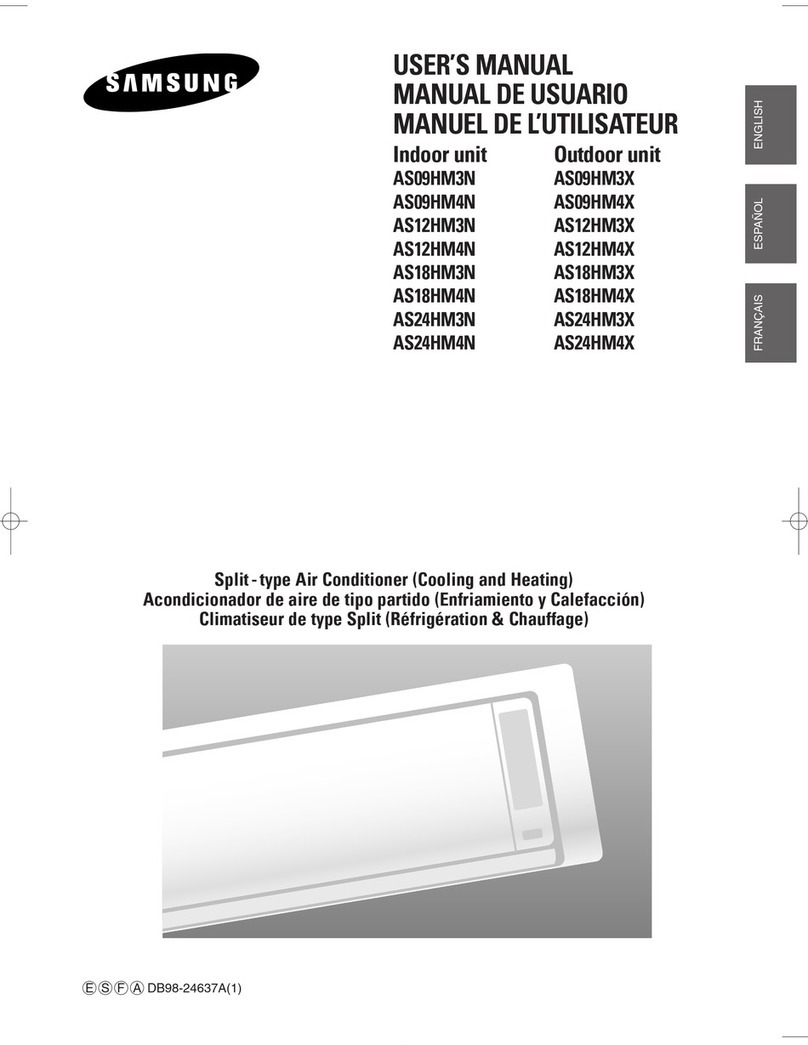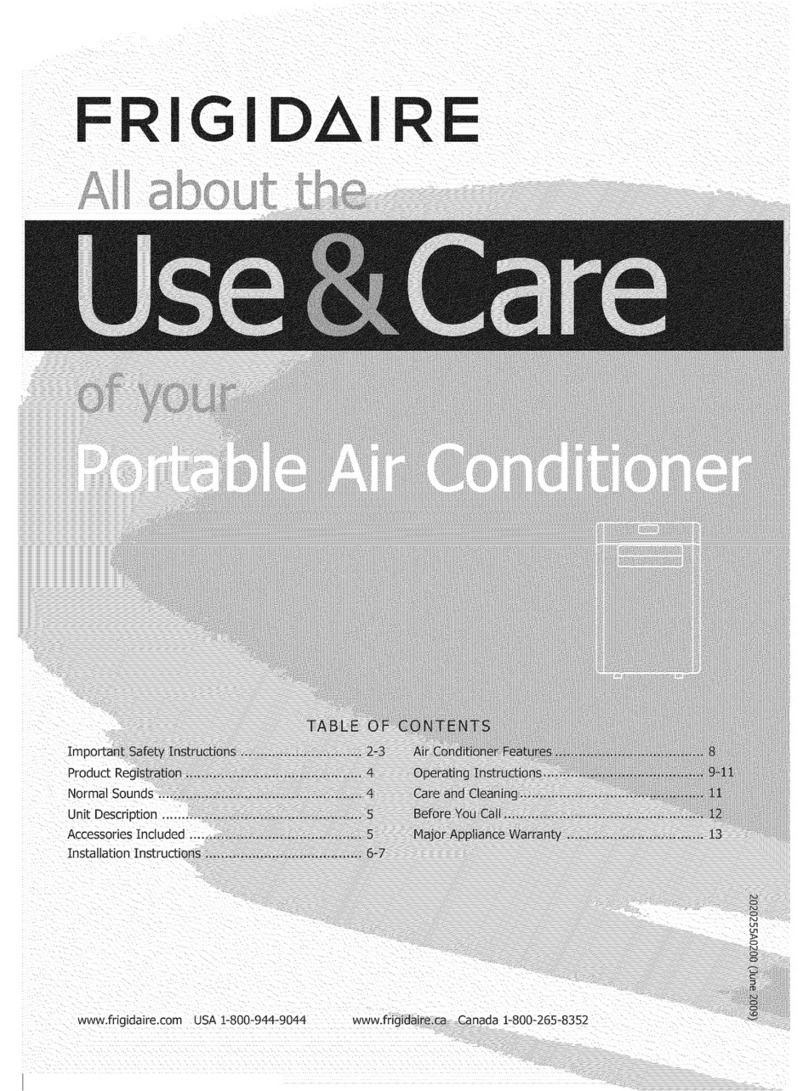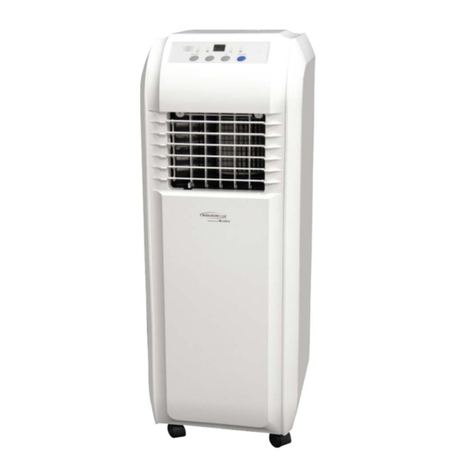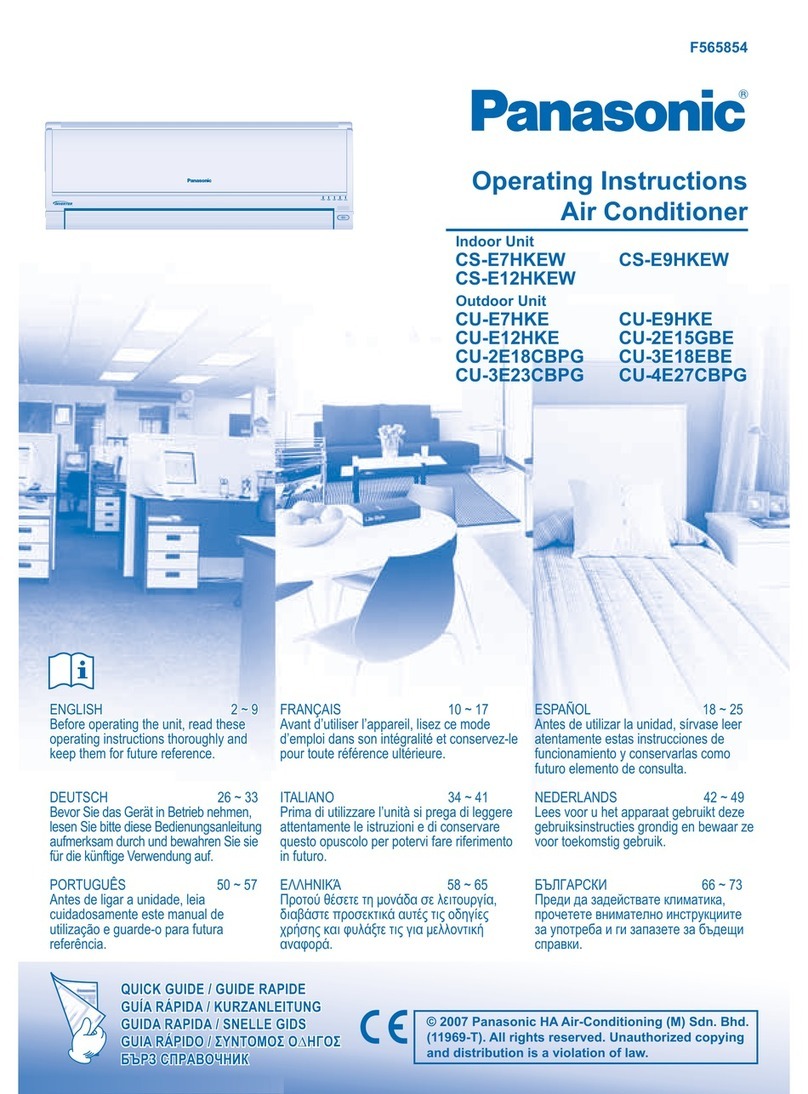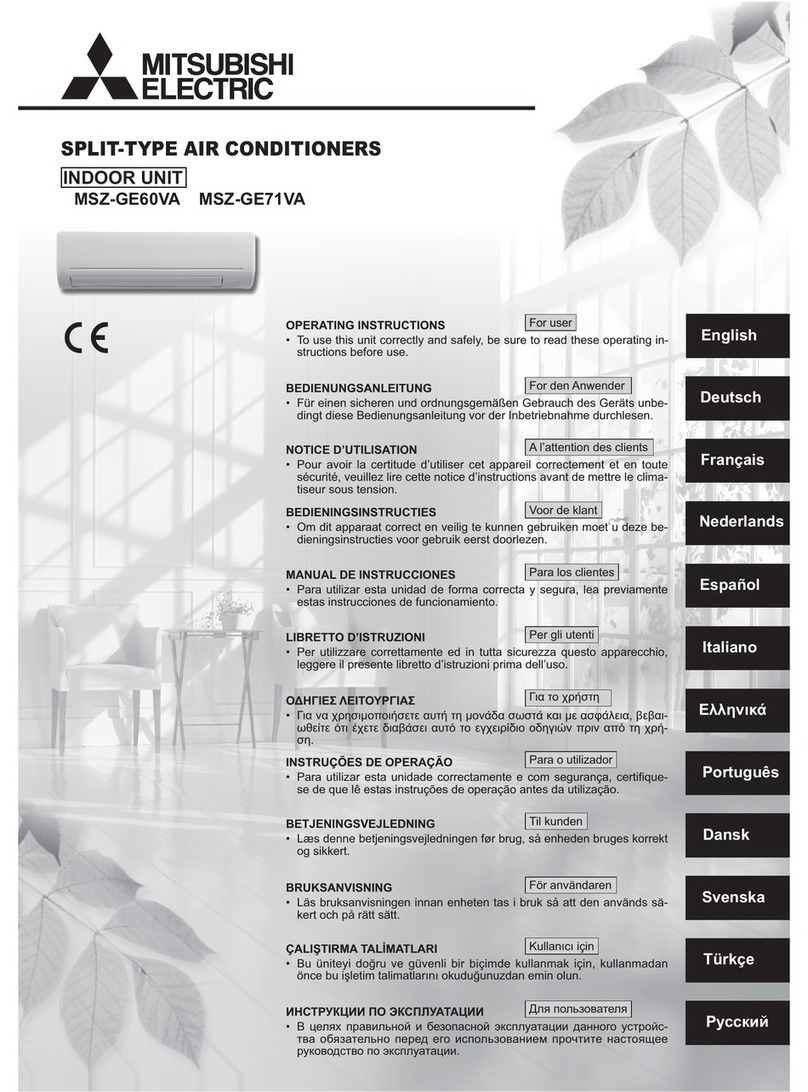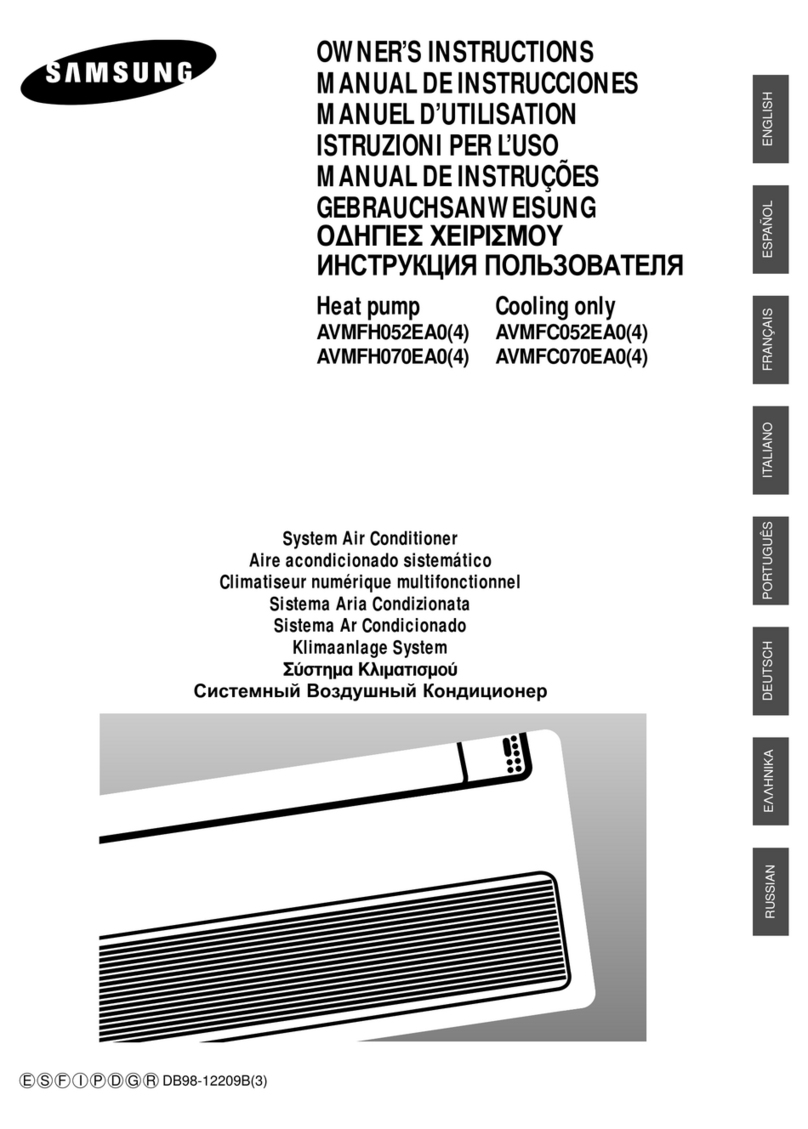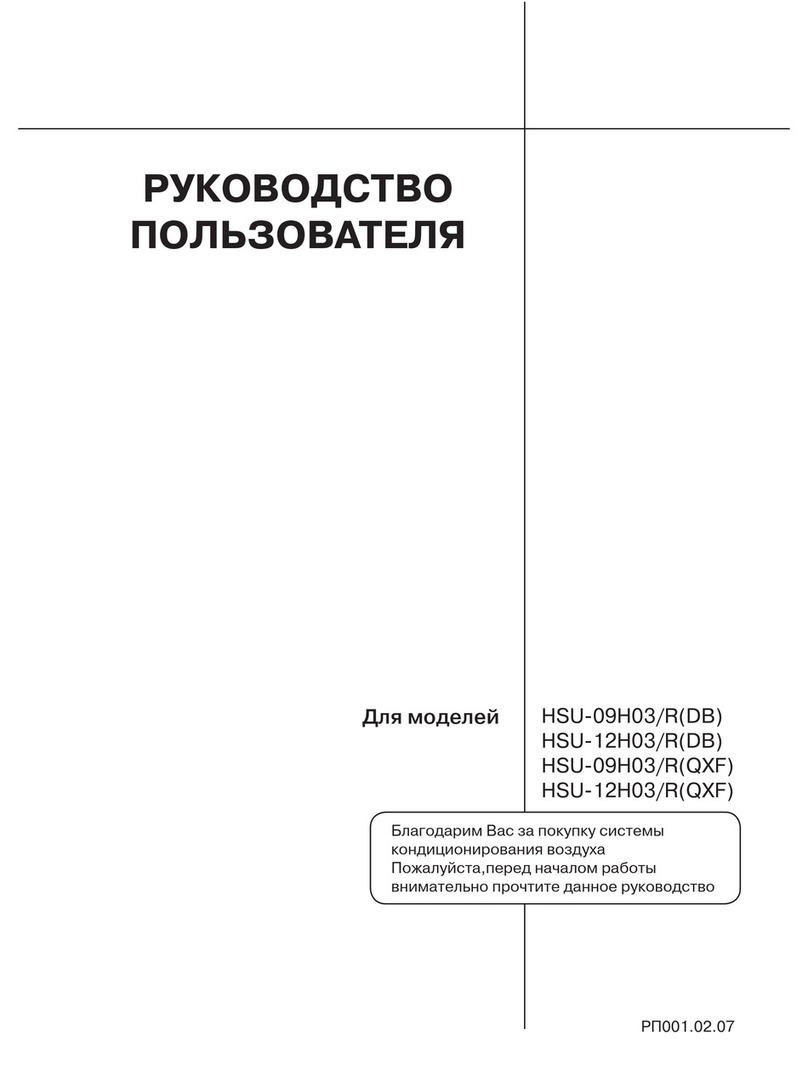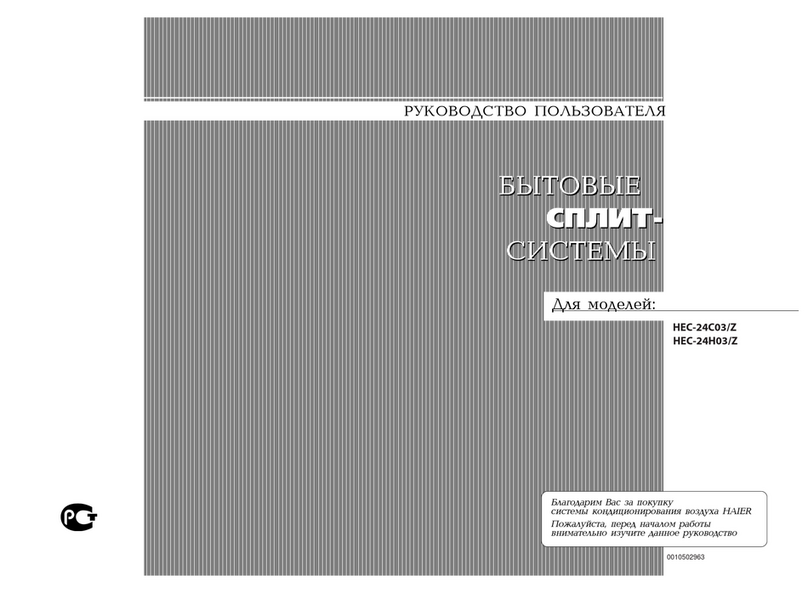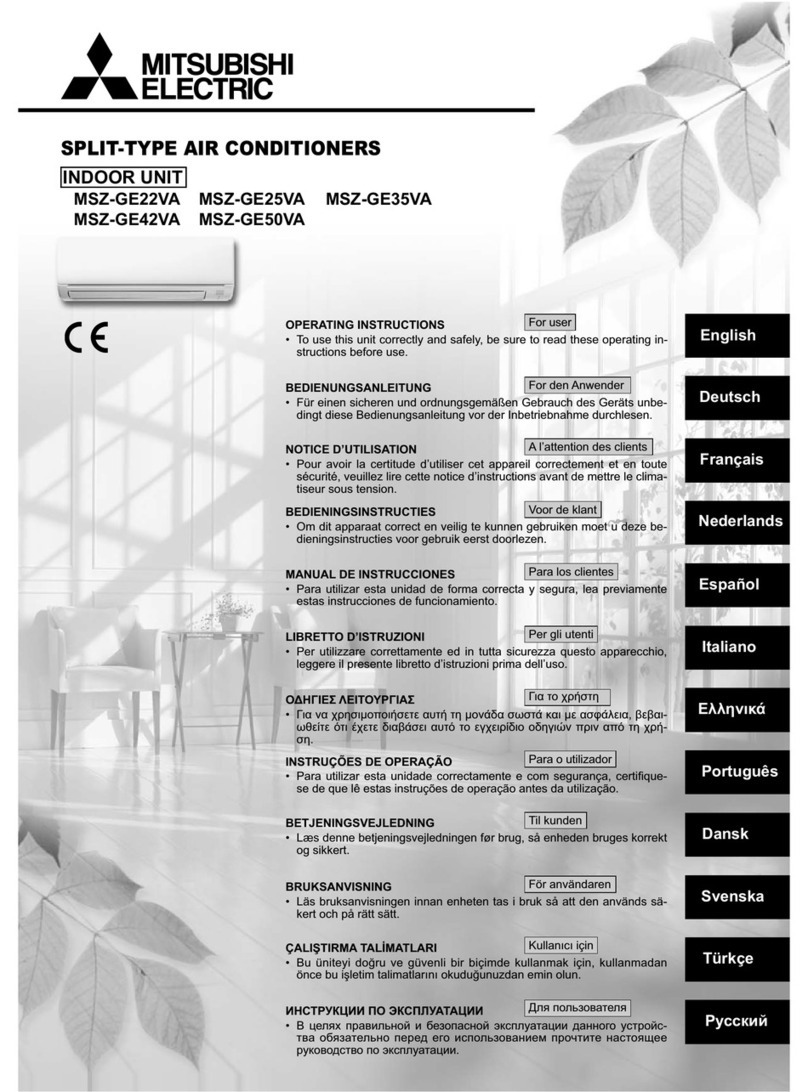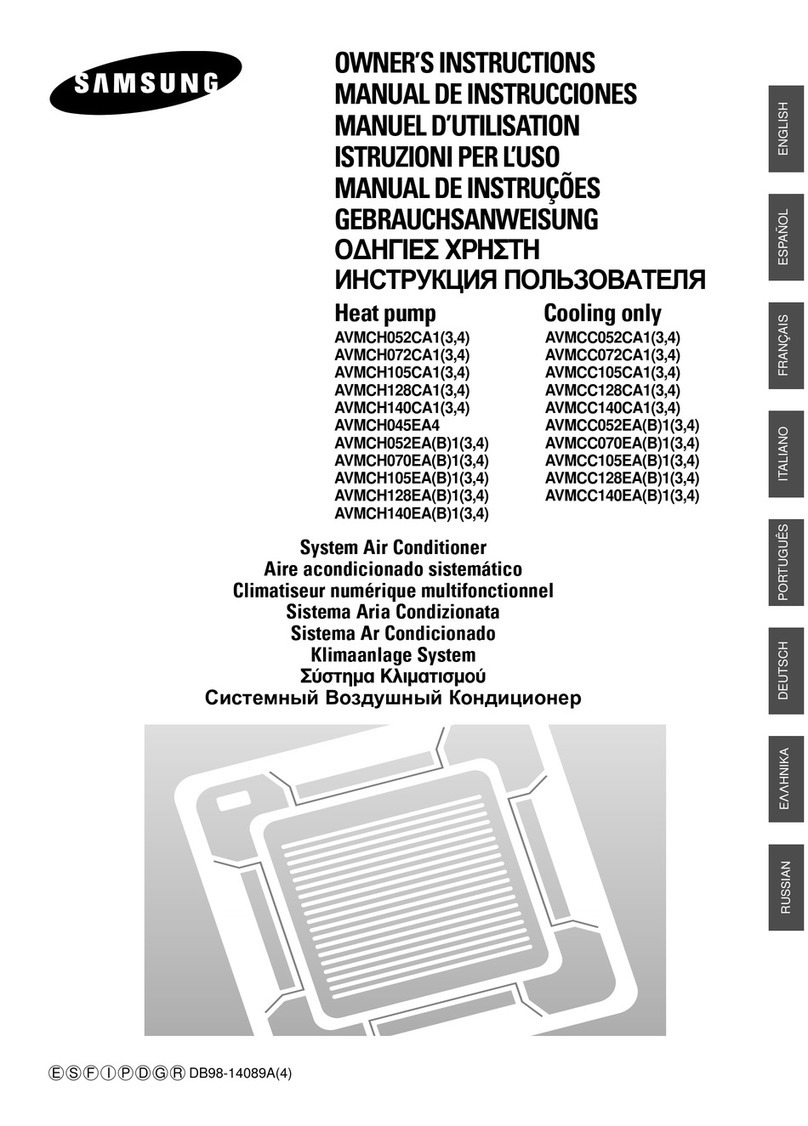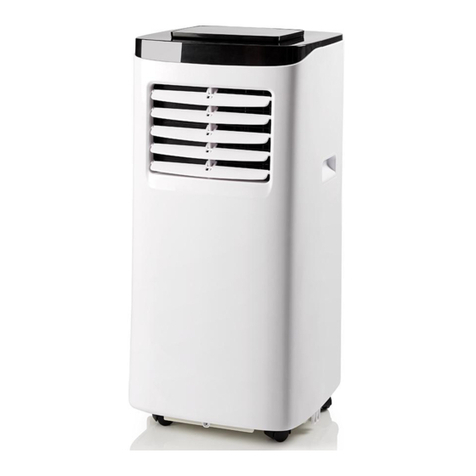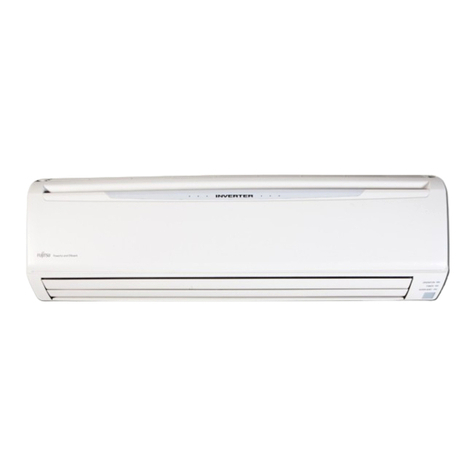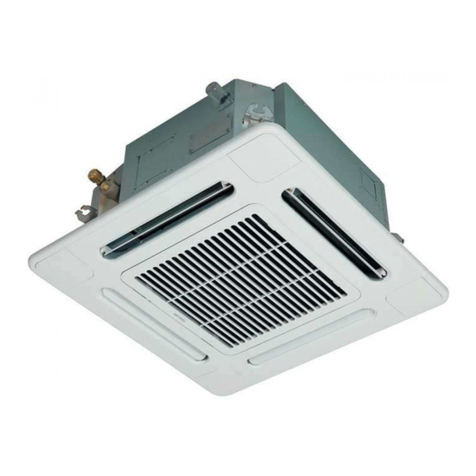
• Follow local grid interconnection rules while installing the air conditioning and ensure that it is
properly grounded. If you have any question on electrical installation, follow the instructions of the
manufacturer, and if necessary, ask a professional electrician to install it.
• Place the machine in a flat and dry place and keep a distance of above 50cm between the ma-
chine and the surrounding objects or walls.
• After the air conditioning is installed, ensure that the power plug is intact and firmly plugged into
the power outlet, and place the power cord orderly to prevent someone from being tripped or pulling
out the plug.
• Do not put any object into the air inlet and outlet of the air conditioning. Keep the air inlet and
outlet free from obstructions.
• When drainage pipes are installed, ensure that the drainage pipes are properly connected, and
are not distorted or bended.
• While adjusting the upper and lower wind-guide strips of the air outlet, pluck it with hands gently
to avoid damaging wind-guide strips.
• When moving the machine, make sure that it is in an upright position.
• The machine should stay away from gasoline, flammable gas, stoves and other heat sources.
• Don‘t disassemble, overhaul and modify the machine arbitrarily, otherwise it will cause a machi-
ne malfunction or even bring harm to persons and properties. To avoid danger, if a machine failure
occurs, ask the manufacturer or professionals to repair it.
• Do not install and use the air conditioning in the bathroom or other humid environments.
• Do not pull the plug to turn off the machine.
• Do not place cups or other objects on the body to prevent water or other liquids from spilling
into the air conditioning.
• Do not use insecticide sprays or other flammable substances near the air conditioning.
• Do not wipe or wash the air conditioning with chemical solvents such as gasoline and alcohol.
When you need to clean the air conditioning, you must disconnect the power supply, and clean it
with a half-wet soft cloth. If the machine is really dirty, scrub with a mild detergent.
• The appliance can be used by children aged from 8 years and above and persons with reduced
physical, sensory or mental capabilities if they have been given supervision or instruction concer-
ning use of the appliance in a safe way and understand the hazards involved.
• Children shall not play with the appliance.
Features
• With cooling, heating, dehumidification and air supply function.
• Automatic swing leaf in the outlet has automatic air swing function. If the air swing function is in
operation, you can press the SWING button to stop the swing leaf at the desired angle.
• LCD displays the control panel. High-quality LCD remote control is equipped to facilitate opera-
tion. The remote control can be placed on the back of the body.
• Handles on both sides adopt dividing point design, so that it is easer to carry it.
• The handles on the rear of the air conditioner allow the power cord to be securely stored to
prevent damage when carrying the air conditioner.
• Air filtration capability.
Thank you for purchasing our product.
Before using this unit, please read this manual in order to avoid improper handling and use
ofthedevice.
